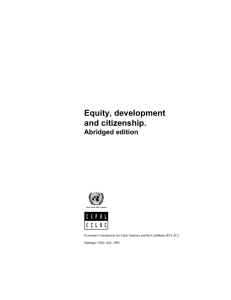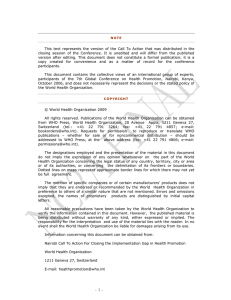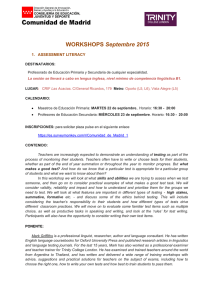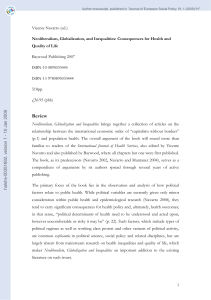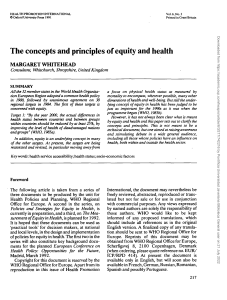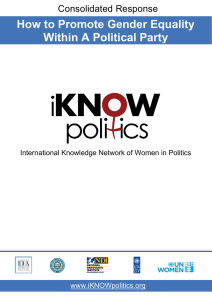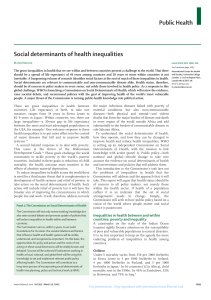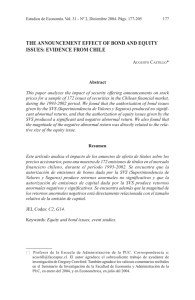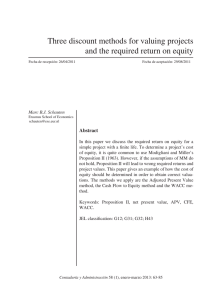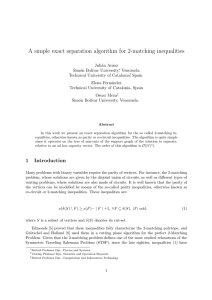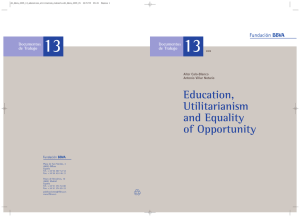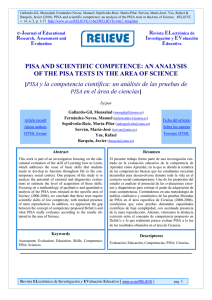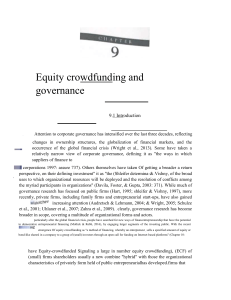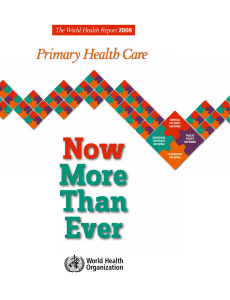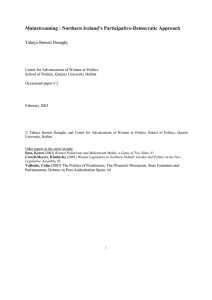Lesson 6-Equity in education
Anuncio
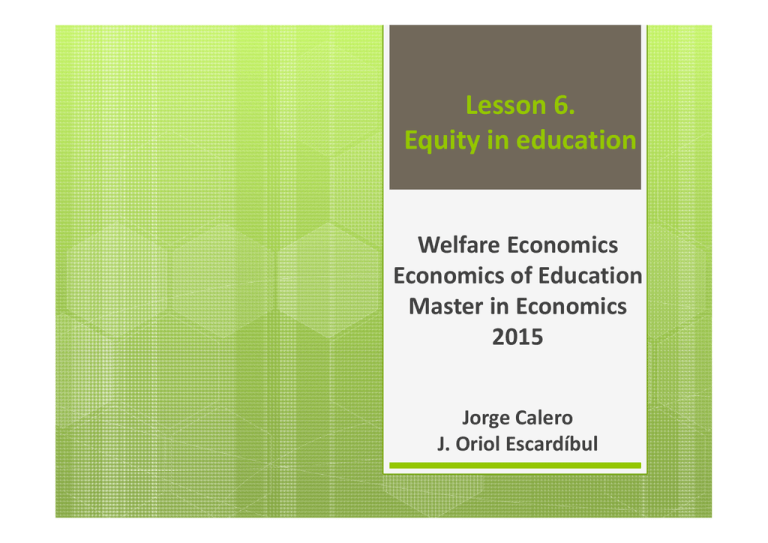
Lesson 6. Equity in education Welfare Economics Economics of Education Master in Economics 2015 Jorge Calero J. Oriol Escardíbul Index 1. Education and equity. 2. Dimensions of equity in education. 3. Measuring inequalities in education. A compact measure: the ESCS gradient (PISA). 4. Example: multilevel analysis applied to PISA 5. Recommendations education policy 1. Education and equity (I) • (Supposed) ability of education to generate simultaneously improvements in the areas of productivity and equity. Equity: in the form of equality of opportunities and intergenerational mobility. • Combination of potential benefits: it leads to some naïve view, like Tony Blair’s in General Election 1997: “education, education and education” (three priorities for public policy). 1. Education and equity (II) • Great capacity of the educational system as a mechanism for the reproduction of social structure (and inequalities). This is its main traditional function. The use of education to modify social structure is a recent trait of public policies. Need for well oriented and durable interventions. • Education still is a very powerful mechanism for keeping the social position (and incomes) of large strata of society (middle classes). Strategies of specific social groups to access (public) educational resources. The case of publicly financed private schools in Spain (escuelas concertadas). • The real effect of the educational system on the equity domain is limited by how the labour market reproduce inequalities. Ex: wage structures which reproduce gender inequalities despite the egalitarian effects of the educational system. 2. Dimensions of equity in education Principles of equity (political decision): 1. No interest in equity: ‘natural’ or ‘libertarian’ position (avoid interventions that limit individual liberties). Neoliberal approach. Equality rights against liberty rights. 2. Equality of access or opportunity. Meritocratic school: selection of students based on ability (merit). Minimal standards + election. 3. Equality of treatment. Comprehensive school. Problem: treating equally to the different ones provoke different results. 4. Equality of achievement or academic success. Definition of a set of key competences, guaranteed for all. External evaluation as central policy mechanism. Equal treatment for equal need. 5. Equality of social fulfillment. Results in the labour market 3. Measuring inequalities in education (I) Aggregated index: ESCS index in PISA (index of economic, social and cultural status). Regression lines: reading scores by ESCS. 3. Measuring inequalities in education (II) 3. Measuring inequalities in education (III) School ownership (PISA-2009) 3. Measuring inequalities in education (IV) Italy Netherlands Japan Finland Hungary Korea Denmark Germany Switzerland Portugal Israel Austria Ireland Sweden Chile Czech Republic Spain OECD average Australia Mexico Canada Greece Poland United Kingdom United States -70 -50 -30 -10 raw 10 30 controlling for pupil ESCS 50 70 controlling for pupil and school ESCS 4. Multilevel analysis Variables Determinants of student is in a low level of competence in math factors Coeficient (s.e.) Odds-ratio AGE 0,099 (0,117) 1,105 WOMEN 0,502*** (0,071) 1,653 EDINFA (ha cursado ed. infantil más de un 1 año) -0,389*** (0,106) 0,678 EDADTIC (edad de inicio en las TIC) 0,077*** (0,014) 1,080 REPPRIM (repetido primaria) 2,117*** (0,086) 8,309 REPSEC (repetido secundaria) 1,682*** (0,094) 5,375 REPRIMSEC (repetido primaria y secundaria) 3,286*** (0,145) 26,727 ABSENT1 (faltó a clase 1-2 días) 0,360*** (0,080) 1,434 ABSENT2 (faltó más de dos días) 0,726*** (0,162) 2,066 INMIG1(inmigrante de primera generación) 0,480*** (0,119) 1,617 INMIG2(inmigrante de segunda generación) 0,316 (0,234) 1,371 IDIOMA (Idioma en casa igual al del test) -0,113 (0,101) 0,893 MONOPARENTAL -0,232** (0,115) 0,793 ESCS (índice socioeconómico y cultural) -0,193*** (0,038) 0,824 SCHOOL VARIABLES REGIONAL & LOCAL VARIABLES Yes Yes 5. Recommendations education policy (I) Special attention to specific schools Intervention centers with more repetition and dropout problems (low performing schools UK). Performances "tailored" for every school. Best modest coverage programs (objectives, number of schools ...) but intensive and with sufficient endowment (USA evidence). More resources in staff (teachers, counselors ...), teacher training to address diversity and higher pay (with links to objectives). Recognition of successful practices in disadvantaged schools (schools should be rewarded & stigma reduced). Radical policy?: split schools, merge centers, close schools... Countries with improved PISA results (2000-2012) = improvements in students <Level 2. 5. Recommendations education policy (II) Special attention to specific schools & families Public expenditure Cash transfers/ vouchers Progresa (México), Bolsa Escola (Brasil), Familias en Acción & Programa de Ampliación de Cobertura de Educación Secundaria –PACES- (Colombia) Yes Girls’ scholarship programme (Kenya) Yes Financial incentives offered by a number of Schools in Chicag, Dallas & New York Yes Helping Outstanding Pupils Educationally –HOPE- (Georgia, USA) Dynarski (2003), Dynarski & Scott-Clayton (2013), Mealli & Rampichini (2012), Mediavilla (2013) Scholarships Yes Yes

